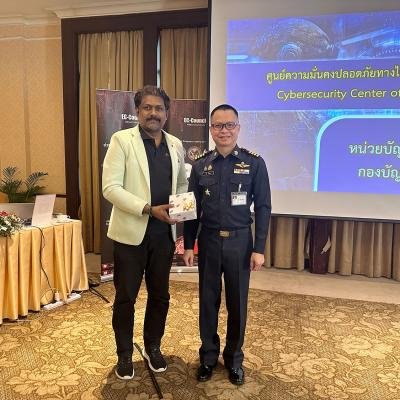In today's digitally driven world, small and medium-sized businesses (SMBs) find themselves in the crosshairs of cyber threats more than ever before. The question is no longer if a cyber incident will occur, but when it will happen. This underscores the critical need for SMBs to develop and implement a well-structured SMB Cybersecurity Incident Response Plan (CSIRP). In this comprehensive guide, we will delve into the essential components of a robust CSIRP for SMBs, highlighting the key steps necessary to bolster their cybersecurity posture.
1. Understanding the Complex Cyber Threat Landscape
To effectively tackle cybersecurity incidents, SMBs must first grasp the intricacies of the ever-evolving cyber threat landscape. Awareness of the latest cyber threats, vulnerabilities, and attack techniques is vital. This knowledge empowers organizations to anticipate and mitigate potential risks, making the difference between a secure business and a vulnerable target.
The cyber threat landscape is a dynamic field. Hackers and malicious actors constantly adapt and refine their tactics. To keep up, SMBs should stay informed through threat intelligence sources, industry reports, and cybersecurity training.
2. Assembling Your Cybersecurity Team
A well-coordinated response to a cybersecurity incident requires a dedicated team with the skills and knowledge to manage and mitigate threats effectively. SMBs should establish a cybersecurity incident response team (CIRT) consisting of individuals who understand the organization's systems, data, and potential vulnerabilities.
Roles within the CIRT may include:
- Incident Commander: Oversees the entire incident response process.
- Technical Experts: Handle the technical aspects of the incident, such as investigating the breach and deploying countermeasures.
- Legal Advisors: Provide guidance on legal aspects, including compliance with data protection and breach notification regulations.
- Public Relations Specialists: Manage external and internal communications to protect the organization's reputation.
3. Developing a Robust Incident Response Plan
A well-defined Cybersecurity Incident Response Plan (CSIRP) is the foundation of effective incident management. This plan should outline procedures, roles, and responsibilities for addressing security incidents. It also needs to include communication strategies, incident categorization, and a clearly defined incident severity framework.
A comprehensive CSIRP typically consists of the following key elements:
- Plan Overview: A high-level summary of the plan's purpose, objectives, and scope.
- Incident Response Team: A list of team members, their roles, and contact information.
- Incident Identification and Classification: Clear criteria for identifying and categorizing incidents based on severity.
- Incident Notification: Protocols for reporting incidents, including who to contact and how.
- Incident Response Procedures: Step-by-step instructions for responding to different types of incidents.
- Containment and Eradication: Strategies for stopping the incident's progression and removing the threat from the network.
- Recovery and Restoration: Steps for rebuilding affected systems and data to minimize downtime.
- Legal and Regulatory Compliance: Guidance on adhering to relevant data protection and breach notification laws.
- Communication and Public Relations: Strategies for notifying stakeholders, customers, and the public about the incident and recovery efforts.
- Post-Incident Review and Improvement: Procedures for analyzing the incident response, identifying areas for improvement, and updating the CSIRP accordingly.
4. Identifying Critical Assets
As part of the incident response plan, SMBs need to identify and prioritize their critical assets. Critical assets are those systems, data, or resources that are essential for business operations and may be prime targets for attackers. By identifying these assets, organizations can allocate resources more effectively and respond promptly to protect them.
5. Detection and Reporting
Effective incident response starts with early detection and reporting. To achieve this, SMBs should consider investing in advanced security tools, including Intrusion Detection Systems (IDS) and Security Information and Event Management (SIEM) solutions. These tools help in the timely detection of suspicious activities and anomalies within the network. Additionally, employee training is crucial to enable staff to recognize and report potential incidents.
6. Containment and Eradication
In the event of an incident, containment and eradication are critical phases. Containment involves isolating the affected systems or network segments to prevent further damage or data loss. Eradication focuses on identifying the source of the threat and removing it from the network. Rapid response in these stages can significantly reduce the impact of an incident.
7. Recovery and Restoration
After the threat is eliminated, the focus should shift to recovery and restoration. This phase involves rebuilding and restoring affected systems and data to bring operations back to normal. A well-documented CSIRP should outline the necessary steps and strategies to minimize downtime and get the business back on its feet as swiftly as possible.
8. Legal and Regulatory Compliance
In today's interconnected world, cybersecurity incidents often intersect with legal and regulatory compliance. SMBs must be aware of relevant data protection and breach notification laws, as violations can result in severe legal and financial repercussions. Your CSIRP should include guidance on how to comply with these laws, including how to report incidents to the appropriate authorities and affected individuals.
9. Communication and Public Relations
Transparency and effective communication are paramount during a cybersecurity incident. SMBs should have a well-thought-out strategy for notifying stakeholders, customers, and the public about the incident, its impact, and the steps being taken to address it. Failing to communicate effectively can erode trust and damage an organization's reputation.
10. Post-Incident Review and Improvement
The incident response process doesn't end when the threat is neutralized and operations are restored. It is essential to conduct a post-incident review to analyze what went well, what could be improved, and what lessons were learned from the incident. The insights gained from these reviews should inform updates and enhancements to the CSIRP to strengthen the organization's future incident response capabilities.
Conclusion
In an increasingly digital world, the importance of an effective SMB Cybersecurity Incident Response Plan cannot be overstated. At digiALERT, we understand the unique challenges faced by small and medium-sized businesses when it comes to safeguarding against cyber threats. We firmly believe that a well-structured and proactive incident response plan is the linchpin of your organization's cybersecurity strategy.
As you've learned in this blog, understanding the evolving threat landscape, forming a dedicated response team, and developing clear incident response procedures are crucial steps to ensuring your business is prepared for any cybersecurity eventuality. Communication, legal compliance, and ongoing testing and improvement are equally integral components of this plan.
digiALERT is committed to assisting SMBs in fortifying their cybersecurity defenses and responding effectively to incidents. We encourage you to put these principles into action, review your current security measures, and create or refine your incident response plan. With vigilance, training, and the right tools, you can navigate the complex cybersecurity landscape with confidence, protecting your business, your customers, and your future. Remember, in the digital age, preparedness is the key to resilience.







